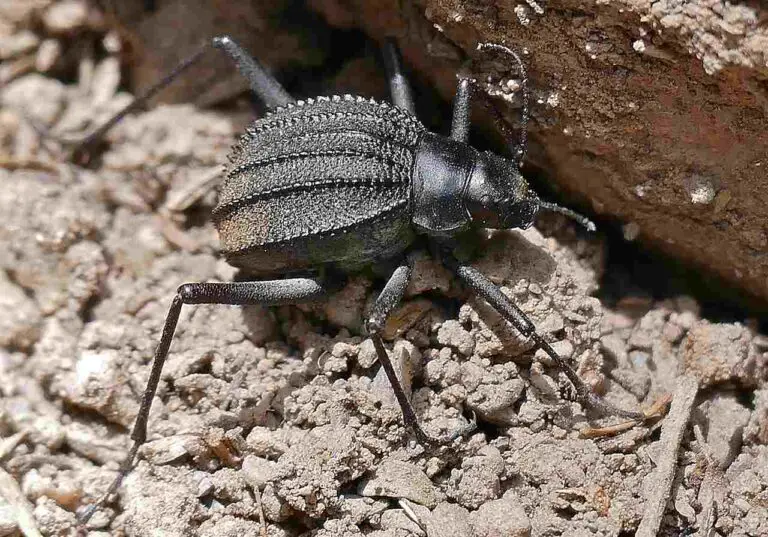5 Abiotic Factors of the Ecosystem Explained
Abiotic factors of the ecosystem are; sunlight, water, air, temperature and humidity.
This article discusses abiotic factors of the ecosystem, as follows;
1). Sunlight (as one of the Abiotic Factors of the Ecosystem)
Sunlight is an abiotic factor in an ecosystem, which comprises of solar thermal energy and light which are both transmitted by radiation.
Solar energy from the Sun is the primary form and source of energy to the ecosystem. It is the same energy that is converted into chemical form through photosynthesis in plants, with which these plants manufacture their own food and produce biomass through growth.
The plant biomass produced from solar energy (as well as water, CO2 and soil nutrients) is then transferred from one trophic level of the energy pyramid to another, so that it serves as the primary food and energy source for autotrophs and all kinds of heterotrophs (herbivores, omnivores, carnivores).
Sunlight is an important factor in an ecosystem because it supplies energy that drives all major processes required to sustain the ecosystem and its inhabitants.
The effect of lights as an abiotic factor in an ecosystem is increased organic activity, in the form of photosynthesis, germination, locomotion, feeding, biodegradation and reproduction.
Sunlight also directly affects climate, through its elements like temperature and humidity [1].

2). Water
Water is an abiotic factor that is very important to the sustainability of the ecosystem.
This is because it constitutes a major portion (more than 50%) of organic biomass (which includes living organisms, and plays a role in the distribution of habitats, species, and climatic conditions [2].
In fact, the presence and available quantity of water plays a role in determining the type of an ecosystem; where biomes like forests, deserts and tundras are differentiated partly on the basis of the amount of water (precipitation, groundwater, streams) present in them.
Water can also constitute an ecosystem of its own. The ecosystem for water alone is called the aquatic ecosystem; and it can be categorized into saltwater and freshwater types based on salinity.
Aquatic systems have their own biotic and abiotic factors.
The biotic factors in aquatic ecosystems are organisms, that include fish, phytoplankton, zooplankton, aquatic plants, and mammals like whales. Abiotic factors include temperature, salinity, turbidity, and pH.
For a larger, non-aquatic ecosystem, water can form micro-ecosystems, and can also influence the biotic and abiotic factors of the larger ecosystem.
Water affects abiotic factors in an ecosystem by controlling hydrological processes like evaporation, transpiration and condensation, all of which directly influence the environment in terms of temperature, humidity, pH, atmospheric pressure, soil type, nutrients, and salinity.
Biotic factors in an ecosystem are affected by water through its role in determining biodiversity of species, growth patterns of plants, and adaptive characteristics of animals.

3). Air (as one of the Abiotic Factors of the Ecosystem)
Air is an important abiotic factor because it plays a role in many ecological processes like respiration, soil modification, and biodegradation.
All metabolic activities of organisms require oxygen in air to be carried out. This oxygen is absorbed in the mitochondrion of organic cells, which then releases energy for various functions.
Climatic conditions are affected by air which may occur in the form of wind, and may control precipitation among other atmospheric processes.
Air also contains elements like nitrogen and carbon, which can be sequestered in soil [4].
4). Temperature
As an abiotic factor, temperature is closely linked to other factors like air, water, and solar radiation.
It is a core element of climate, and therefore has a definitive effect on the ecosystem.
Temperature affects the ecosystem by facilitating or inhibiting the activities and growth of organisms, the rate of bioenergy production and transfer, and the adaptive behaviors and biodiversity of organisms.
The intensity of the effect of temperature can be assessed by observing how it regulates the hydrological cycle, and the activities of organisms like extremophilic bacteria, which have become adapted to extreme high and low temperature conditions [3].
5). Humidity (as one of the Abiotic Factors of the Ecosystem)
Humidity is an abiotic factor that represents the moisture content of a medium, in this case especially air and soil.
Like sunlight and temperature, it is an element of the climate.
Humidity is an important factor in the ecosystem because it plays a role in both physical and chemical processes that determine the characteristics of the climate, soil, and biotic components like plants and animals.
Humidity affects organisms in an ecosystem by facilitating or inhibiting growth; as in the case of organisms like fungi that tend to grow better under highly humid conditions [5].
High humidity can increase microbial activity, biodegradation rate, and pathogenic diseases; while extremely low humidity can inhibit organic productivity.
Conclusion
The main abiotic factors of the ecosystem include;
1. Sunlight
2. Water
3. Air
4. Temperature
5. Humidity
Other ecosystem abiotic factors are; pH, salinity, turbidity, soil minerals, soil aggregates, acidity, and dissolved oxygen.
References
1). Brite, K. (2018). "Five Different Types of Abiotic Factors." Available at: https://sciencing.com/five-different-types-abiotic-factors-7762257.html. (Accessed 14 February 2023).
2). Del Giudice, E.; Elia, V.; Tedeschi, A. (2009). "The Role of Water in the Living Organisms." Neural Network World 19(4):355-360. Available at: https://www.researchgate.net/publication/289273980_The_Role_of_Water_in_the_Living_Organisms. (Accessed 14 February 2023).
3). Hutchison, C. (2018). "How Do Temperature & Abiotic Factors Affect Organisms?" Available at: https://sciencing.com/do-abiotic-factors-affect-organisms-8612318.html. (Accessed 14 February 2023).
4). Lu, X.; Vitousek, P. M.; Mao, Q.; Gilliam, F. S.; Luo, Y.; Turner, B. L.; Zhou, G.; Mo, J. (2021). "Nitrogen deposition accelerates soil carbon sequestration in tropical forests." Proc Natl Acad Sci U S A. 2021 Apr 20;118(16):e2020790118. Available at: https://doi.org/10.1073/pnas.2020790118. (Accessed 14 February 2023).
5). Pasanen, P.; Kasanen, J-P.; Rautiala, S.; Ikäheimo, M.; Rantamäki, J.; Kääriäinen, H.; Kalliokoski, Pentti, K. (2000). "Fungal growth and survival in building materials under fluctuating moisture and temperature conditions." International Biodeterioration & Biodegradation 46(2):117-127. Available at: https://doi.org/10.1016/S0964-8305(00)00093-7. (Accessed 14 February 2023).





